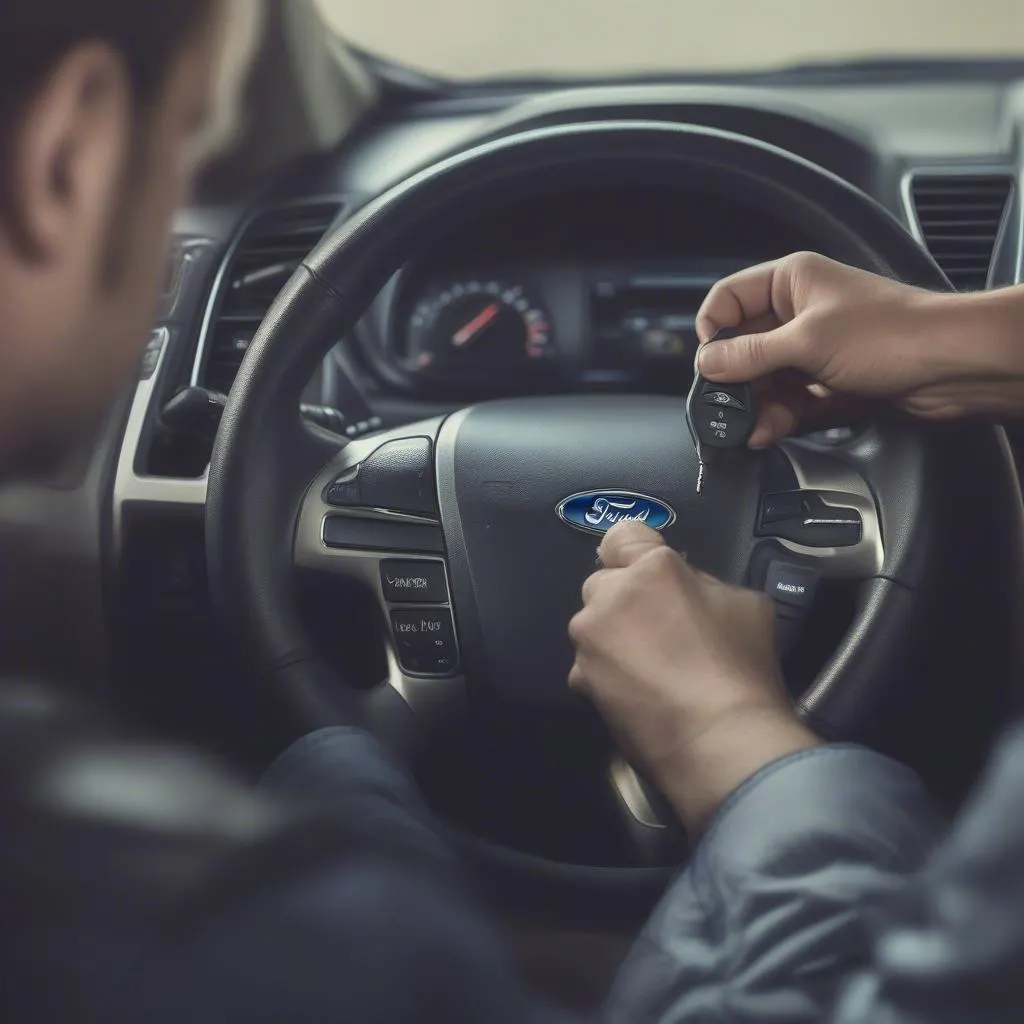The brake warning light on your dashboard is a crucial safety feature, especially in a classic truck like the 1985 Chevy C10. When this light illuminates, it signals a potential problem within your braking system that requires immediate attention. Ignoring this warning could lead to reduced braking efficiency or even complete brake failure, putting you and others at risk.
Common Causes of a Brake Warning Light in a 1985 Chevy C10
There are several reasons why the brake warning light might come on in your 1985 Chevy C10. Some of the most common culprits include:
- Low Brake Fluid: This is often the most straightforward cause. A leak in the brake lines, calipers, or wheel cylinders can lead to a drop in brake fluid level, triggering the warning light.
- Worn Brake Pads: Over time, your brake pads naturally wear down. When they reach a certain thickness, the brake pad wear indicator will make contact with the rotor, turning on the brake warning light.
- Faulty Brake Master Cylinder: The brake master cylinder is responsible for generating the hydraulic pressure needed for braking. A leak or internal failure within the master cylinder can cause a loss of pressure and illuminate the warning light.
- Malfunctioning Parking Brake: If the parking brake is not fully released, it can trigger the brake warning light.
- Electrical Issues: While less common, a faulty brake light switch, wiring problems, or a blown fuse can also cause the warning light to illuminate.
Diagnosing the Problem: A Step-by-Step Guide
Before you start, ensure your 1985 Chevy C10 is parked on a level surface and the engine is off.
-
Check the Brake Fluid Level: Locate the brake fluid reservoir under the hood. It’s a translucent plastic container with a black cap. The “Min” and “Max” markings are visible on the side. If the fluid level is below the “Min” line, add the appropriate brake fluid until it reaches the “Max” line.
-
Inspect for Leaks: Carefully examine the brake lines, hoses, calipers, and wheel cylinders for any signs of leakage. Look for wet spots, drips, or puddles of brake fluid. If you find a leak, it’s crucial to address it immediately.
-
Examine the Brake Pads: If the brake fluid level is fine and you don’t see any leaks, the next step is to inspect your brake pads. This will likely require removing the wheels for a proper visual inspection. Check for excessive wear and tear. If the pads are thin or worn down to the metal backing plate, they need replacement.
-
Test the Parking Brake: Ensure the parking brake is fully disengaged. Sometimes a partially engaged parking brake can trigger the warning light.
-
Seek Professional Help: If you’ve gone through the steps above and are still unable to pinpoint the cause of the illuminated brake warning light, it’s time to consult a qualified mechanic specializing in classic vehicles like your 1985 Chevy C10. They have the expertise, experience, and specialized tools to accurately diagnose and repair complex brake issues.
“When it comes to brakes, never delay repairs,” advises John Miller, a veteran mechanic with over 30 years of experience working on classic Chevy trucks. “Even a seemingly minor issue can quickly escalate into a serious safety hazard.”
Importance of Timely Brake Repair
Your 1985 Chevy C10’s braking system is critical for your safety and the safety of others on the road. Ignoring a brake warning light can have dire consequences.
Miller further emphasizes, “Regular brake maintenance, including timely inspections and fluid flushes, can prevent many problems before they arise. Don’t wait for a warning light to start caring for your brakes.”
Conclusion
Addressing a brake warning light on your 1985 Chevy C10 promptly is not just a suggestion; it’s a necessity. By understanding the potential causes and following a systematic approach to diagnosis, you can ensure your classic truck remains safe and roadworthy. Remember, when it comes to brakes, erring on the side of caution is always the wisest course of action.


